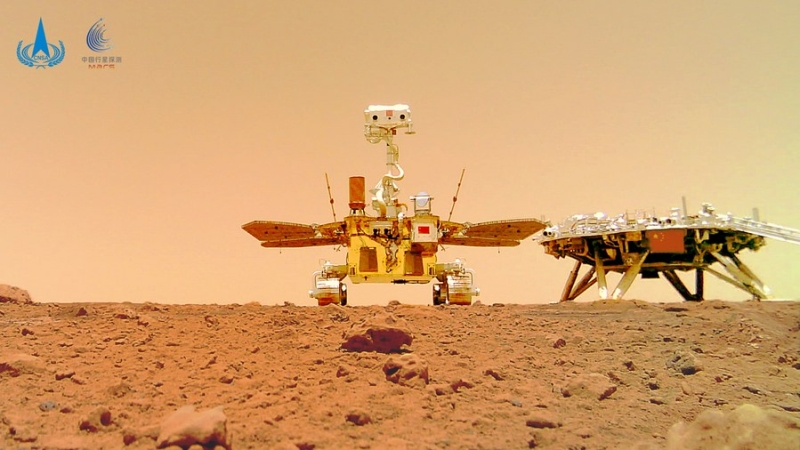
Photo released on June 11, 2021 by the
China National Space Administration (CNSA) shows a selfie of
China's first Mars
rover Zhurong with the landing platform. [CNSA/Handout via Xinhua]
A new study has revealed that the site
where China's Mars rover Zhurong landed must have experienced wind and possibly
water erosion, providing more evidence on the surface features of the red
planet.
The study, published in the journal Nature
Geoscience this week, analyzed data collected by Zhurong over its first 60
Martian days, during which it has traveled approximately 450 meters.
A team of researchers, led by Ding Liang of
the Harbin Institute of Technology in northeast China, found that the Martian
soil has high bearing strength and cohesion evidence of wind erosion after
studying the surface rocks imaged by the rover's cameras. They also identified
landscapes such as ridges, ripples and eroded craters, indicating that the site
has been subject to long periods of weathering by the wind.
Apart from wind erosion, researchers also
observed some rock textures which appear to be evidence of interactions with
salty water, according to the study.
The China-made rover is a six-wheeled
solar-powered robot weighing 240 kg. It has an expected lifespan of at least 90
Martian days, which is about three months on Earth.
Zhurong touched down on the Utopia
Planitia, a vast plain in the northern hemisphere of Mars, on May 15, 2021.
Since then, it has collected surface rock samples and captured images while
exploring the planet.
Some scientists believe the Utopia Plain is
a volcanic area with an estimated surface age of over 3 billion years. It may
have hosted a large amount of liquid water or ice in the past.
As Zhurong continues to explore, it will be
able to help verify the hypothesis of whether there was an ocean on Mars,
according to the study.
Researchers also compared the data and
images taken by Zhurong with those collected by other rovers elsewhere on Mars,
such as NASA's Viking Lander 2, which visited the Utopia Plain in 1976.
They found that the landing site of the
Chinese Mars rover was scattered with unique small rocks and clasts, showing
more obvious geological features than other sites on previous missions.
The study findings can provide more new
insights into the history of the planet's surface and the evolution of the
northern lowlands on Mars, according to the researchers.
(Source: https://www.chinadaily.com.cn/a/202203/11/WS622b07d3a310cdd39bc8c168.html)

